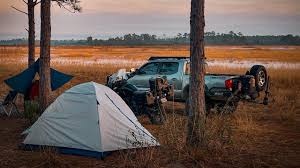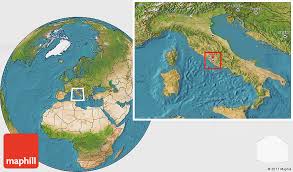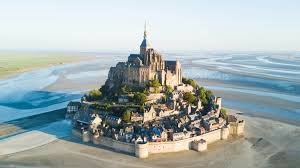What Is Ocala National Forest?
Ocala National Forest is the oldest national forest east of the Mississippi and the second-largest in Florida. Spanning over 600 square miles, it’s located in north-central Florida, between Gainesville and Orlando. The forest is known for its crystal-clear springs, dense pine forests, wildlife diversity, and excellent camping opportunities.
With more than 600 lakes, rivers, and springs, Ocala National Forest is a favorite destination for nature lovers, campers, hikers, swimmers, and paddlers.
Why Camp in Ocala National Forest?
Camping in Ocala offers a unique opportunity to experience Florida’s wild beauty up close. Unlike crowded beach resorts or noisy urban campsites, Ocala gives you a peaceful, natural setting filled with:
- Freshwater springs for swimming and snorkeling
- Primitive and developed campgrounds
- Hiking and biking trails
- Opportunities for wildlife viewing, including deer, black bears, and bald eagles
- Year-round access, thanks to Florida’s mild winters
Whether you want RV camping with full hookups or tent camping in the backcountry, Ocala has something for everyone.
Types of Camping in Ocala National Forest
There are three main types of camping experiences available:
1. Developed Campgrounds
These offer restrooms, picnic tables, grills, and sometimes electric hookups. Great for families and first-time campers.
Popular developed campgrounds:
- Juniper Springs Campground
- Salt Springs Recreation Area
- Alexander Springs Campground
- Lake Delancy Campground
🔗 Recreation.gov – Ocala National Forest Campgrounds
2. Dispersed or Primitive Camping
Also known as “wild camping,” this means setting up a camp in undeveloped areas. No facilities, so campers must be self-sufficient.
- Free of charge (in most areas)
- Requires Leave No Trace ethics
- Check local ranger rules and seasonal fire bans
3. Group Campsites
Some areas like Big Scrub Campground and Lake Eaton offer group camping with space for up to 50 people. Perfect for scouts, clubs, or family reunions.
Reservations are usually required in advance.
Top Campgrounds in Ocala National Forest
Juniper Springs Campground
Located near Juniper Springs Run, this is one of the forest’s most popular campgrounds.
- Activities: Swimming, paddling, hiking
- Amenities: Restrooms, drinking water, grills
- Nearby attractions: Juniper Creek Canoe Run, Fern Hammock Springs
- Best for: Families and paddlers
Salt Springs Recreation Area
One of the most developed spots, offering RV sites with electric hookups.
- Natural springs with clear, warm water
- Boat launch and hiking nearby
- Hot showers, dump station, and camp store
🔗 Salt Springs Campground Details – US Forest Service
Alexander Springs Campground
Famous for its wide, sandy spring basin.
- Snorkeling, scuba diving, canoeing
- 22 campsites for tents and RVs
- Close to the Florida National Scenic Trail
Hopkins Prairie Campground
A seasonal campground open November through June.
- Scenic prairie views and birdwatching
- Pit toilets, no running water
- Primitive, quiet, and ideal for stargazing
Best Time to Camp in Ocala National Forest
Ocala National Forest is open for camping year-round, but the best time to visit is:
- Fall (October–November): Cooler weather, fewer bugs
- Winter (December–February): Mild temperatures, ideal for hiking and wildlife viewing
- Spring (March–May): Blooming wildflowers, active wildlife
- Summer (June–August): Hot and humid, but great for swimming in springs
Avoid heavy rainfall periods and always check for fire restrictions or closures before your trip.
What to Bring for Camping in Ocala
- Tent or RV gear (depending on site type)
- Insect repellent (mosquitoes can be intense)
- Coolers with food and water
- Camping stove or grill
- Hiking shoes and swimwear
- First-aid kit and flashlight
- Bear-proof food containers (black bears are present)
Many sites don’t have nearby stores, so bring all your essentials.
Wildlife in Ocala National Forest
Ocala is home to diverse species. Common wildlife includes:
- Florida black bears
- White-tailed deer
- Alligators (near wetlands)
- Gopher tortoises
- Red-cockaded woodpeckers
- Barred owls and bald eagles
Never feed wildlife and keep a safe distance. Use bear-aware camping practices like storing food in sealed containers and cleaning up trash immediately.
Permits and Regulations
- Most developed campgrounds require reservations via Recreation.gov
- Primitive camping may need a free permit in certain areas
- Fires are allowed in fire rings unless a burn ban is in place
- Pets are allowed but must be leashed
- Alcohol is prohibited in some recreation areas — check signs
Respect nature and follow Leave No Trace principles to protect this beautiful forest for future generations.
Things to Do Near Your Campsite
Besides camping, Ocala National Forest offers:
- Hiking the Florida Trail
- Canoeing Juniper or Alexander Springs
- Birdwatching in Hopkins Prairie
- Scenic drives through pine forests and wetlands
- Fishing and boating in Lake Kerr and Lake George
It’s a place where you can truly disconnect from technology and reconnect with nature.
Conclusion: Why Camp in Ocala National Forest?
If you’re seeking an authentic Florida outdoor adventure, then camping in Ocala National Forest is one of the best decisions you can make. With its natural springs, remote campsites, rich biodiversity, and family-friendly facilities, it offers something for every type of camper—from solo backpackers to large family groups.
Whether you’re pitching a tent under towering pines or enjoying RV comforts by a spring, Ocala promises peace, adventure, and natural beauty like nowhere else in the state.












